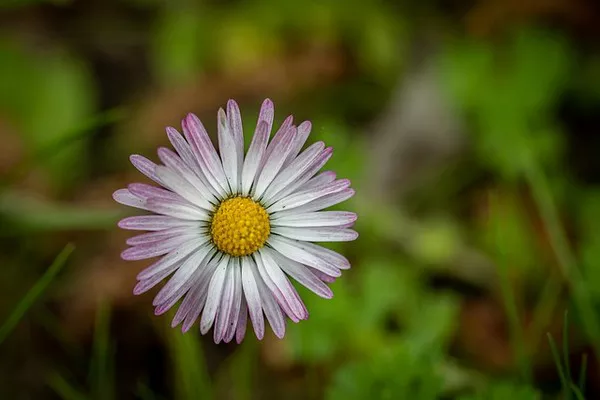In the world of flora, each blossom carries its unique symbolism and cultural significance. Among these, the humble daisy stands out not just for its delicate beauty but also for the rich tapestry of meanings woven into its petals. From ancient folklore to modern literature, the daisy has captured the imagination of many, symbolizing a spectrum of emotions and concepts. In this exploration, we delve into the profound meanings associated with the daisy flower, unraveling its cultural, historical, and symbolic significance.
Historical Roots: Tracing the Daisy’s Symbolic Journey
To truly understand the meaning behind the daisy flower, it is essential to trace its historical roots. The daisy, belonging to the Asteraceae family, has a long-standing presence in various cultures and mythologies. In ancient times, the Greeks revered the daisy, associating it with the goddess Aphrodite, the embodiment of love and beauty.
Interestingly, the name “daisy” is believed to have originated from the Old English term “day’s eye,” highlighting the flower’s tendency to open its petals during the day and close at night. This natural behavior led to the daisy being symbolically linked to the concept of the sun, representing warmth, light, and vitality.
Innocence and Purity: The Dainty Daisies in Cultural Symbolism
One of the most prevalent meanings attributed to the daisy is its representation of innocence and purity. This symbolism is deeply rooted in Christian traditions, where the daisy is often associated with the Virgin Mary. The white petals of the daisy, reminiscent of purity, align with the image of Mary as a symbol of immaculate virtue.
In medieval European folklore, young maidens would adorn their hair with daisies as a sign of innocence and to signify their eligibility for courtship. The delicate charm of the daisy became a visual metaphor for the untouched beauty of young hearts, untouched by the complexities of life.
He Loves Me, He Loves Me Not: Romantic Connotations of the Daisy
The daisy’s association with love extends beyond religious and cultural realms into the realm of romance. The age-old game of “He loves me, he loves me not” involves plucking daisy petals one by one, alternating between the phrases to determine the object of one’s affection. This playful tradition, rooted in folklore and popularized in literature, has cemented the daisy’s status as a symbol of love’s uncertainty and the delicate nature of romantic relationships.
In Victorian flower language, a subtle and intricate form of communication through blooms, the daisy conveyed sentiments of loyal love. Gifting a bouquet of daisies was considered a gesture of affection, expressing fidelity and the promise of a lasting connection.
Nature’s Resilience: The Daisy’s Enduring Symbolism
Beyond matters of the heart, the daisy holds a unique symbolism related to resilience and survival. Thriving in a variety of environments, including meadows, fields, and even the cracks of sidewalks, the daisy is a testament to nature’s ability to adapt and endure. Its simple yet hardy nature has made it a symbol of perseverance, reminding us that beauty can blossom in even the most challenging circumstances.
A Cultural Kaleidoscope: Daisy Symbolism Across the Globe
The daisy’s symbolic significance isn’t confined to a specific culture or region; instead, it has blossomed into a global emblem with diverse meanings. In Chinese culture, for instance, the daisy is associated with simplicity and motherhood. Its unpretentious beauty aligns with the Confucian values of humility and modesty.
Similarly, Native American tribes incorporate the daisy into their medicinal practices, recognizing its healing properties. The daisy’s versatility in cultural interpretations reflects its universal appeal and ability to resonate with people across different backgrounds.
Literary Allure: Daisies in Poetry, Prose, and Art
The daisy’s symbolic allure extends into the realms of literature and art, where it has been a recurring motif for centuries. In William Wordsworth’s poetry, the daisy is a muse, embodying the beauty of nature and the simplicity of rural life. The romantic poets often used the daisy to convey themes of love, innocence, and the transient nature of existence.
In visual art, the daisy has been a subject of fascination for renowned painters like Vincent van Gogh and Mary Cassatt. Van Gogh’s famous painting, “Four Cut Sunflowers,” showcases the artist’s fascination with daisies, capturing the essence of their delicate charm and vibrant presence.
Conclusion
In conclusion, the daisy’s symbolic significance is a multifaceted tapestry that weaves through the annals of history, culture, and literature. From its roots in ancient mythology to its portrayal in contemporary art, the daisy stands as a timeless emblem of purity, love, resilience, and simplicity.
As we gaze upon the daisy’s petals, we are invited to reflect on the intricate meanings it holds, each layer revealing a different facet of the human experience. The daisy, with its unassuming beauty, continues to inspire and captivate, reminding us that within the delicate folds of its petals lies a profound and enduring symbolism that transcends time and cultural boundaries.


